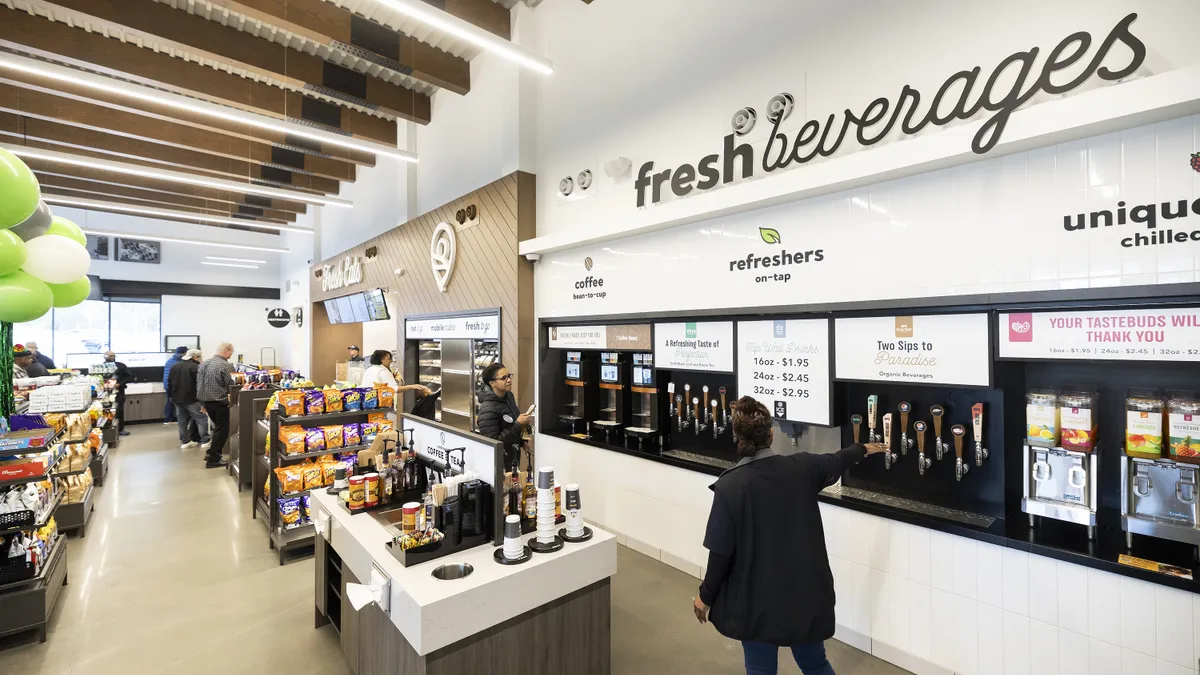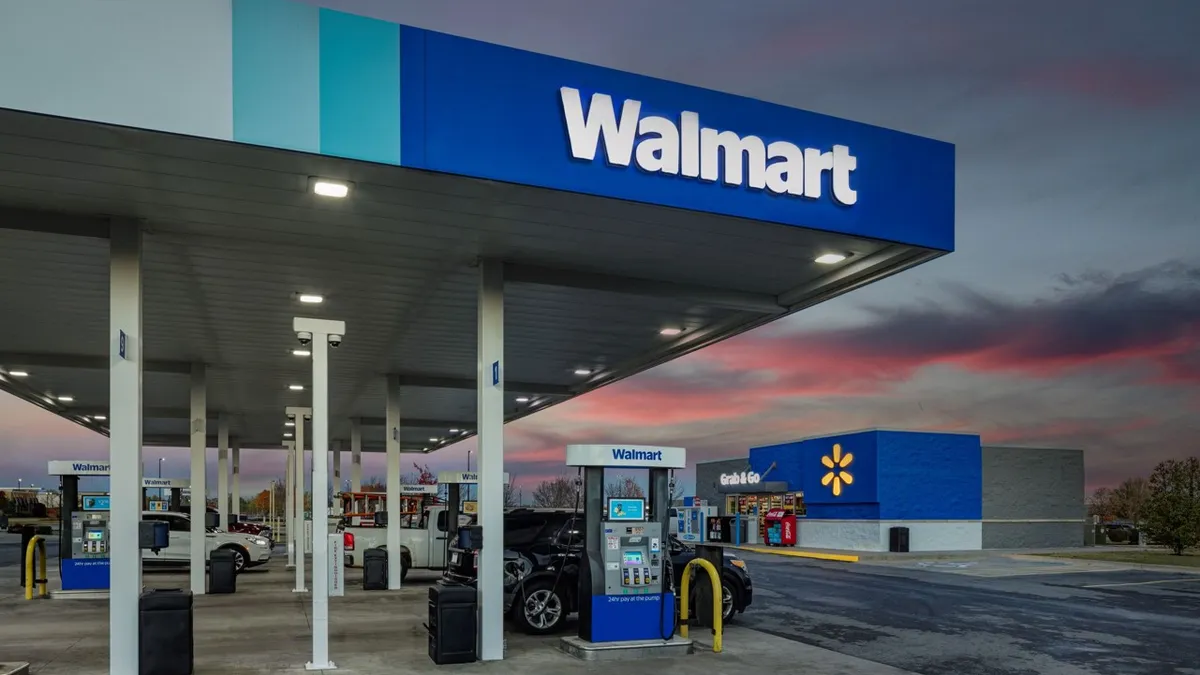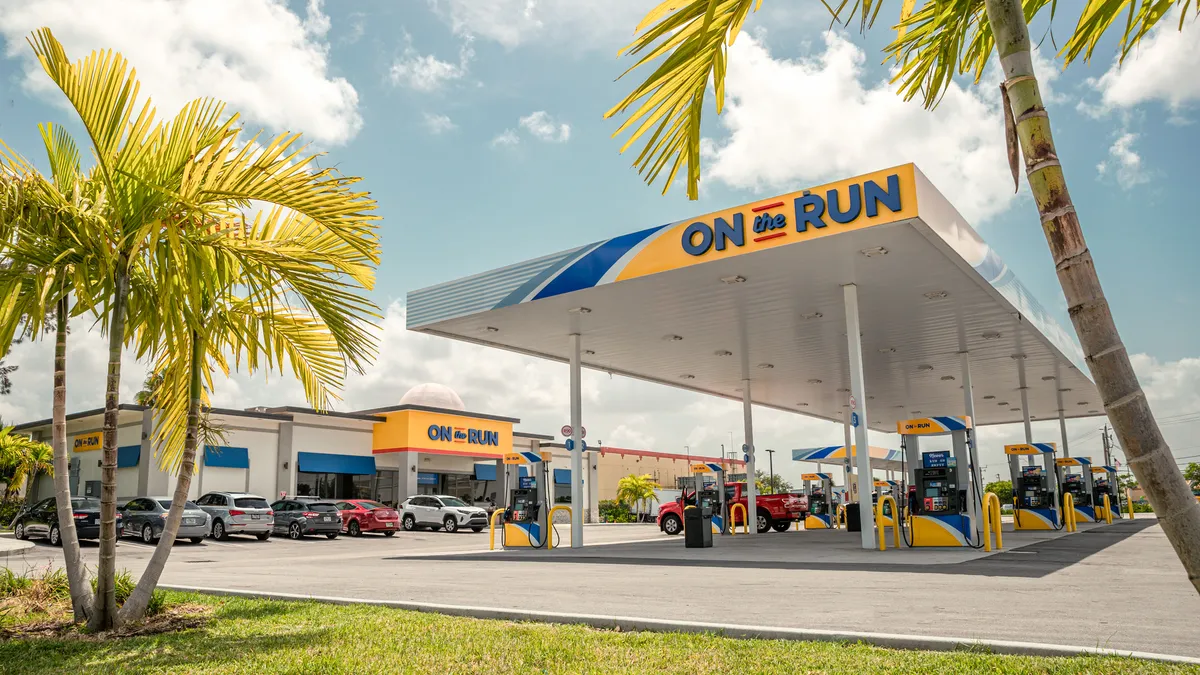For one week every summer, Iowa plays host to RAGBRAI — the world’s oldest, largest and longest recreational cycling event.
It’s something of an annual tradition for me. At the end of July, I load up my bike with a small team of longtime RAGBRAI veterans and drive out to the starting town. I suppose cycling 500 miles across Iowa may sound like torture to some, but it’s truly a unique and incredible experience.
It’s also a great opportunity for retail nerds like me to visit stores. As I reflect on this year’s experience, here’s a few hot takes and observations.
Bold Moves by Dollar General
This may sound strange coming from a guy who once ate at convenience stores for 34 days straight, but I’m saddened that some folks are forced to rely on dollar stores for food.
Dollar stores are a different business — one that thrives while people struggle. Quality takes a back seat when decisions are made during tough times, and this grim reality is reflected in dollar stores’ drab, depressing retail environments with minimal upkeep and uninspiring product selections. As one YouTuber regularly points out, even something as innocuous as a beef steak might actually be a disgusting meat slurry concoction.

During RAGBRAI, I visited a few Dollar General locations — only to be reminded why I typically don’t. But there was one standout exception: DG Market. Far from just passable, it actually left me impressed.
If you haven’t visited DG Market, it’s Dollar General’s effort to provide fresh and healthier foods. Despite questionable pricing and the trademark Dollar General clutter, I was pleasantly surprised to find fresh greens, berries and other grocery staples. While it wouldn’t be my first choice for food, I could easily assemble a quality meal at this store.
I’ve previously written about the potential for convenience stores to play a role in addressing America’s food deserts, and retailers should take note of Dollar General’s efforts in this area. If it doubles down on DG Market, this will be a formidable competitor.
And I must say, the self checkouts weren’t bad either.
Back to Reality on Checkout Technology
On that note, has anyone else noticed how self checkout has become a punching bag in the media lately?
Having spent a few years in the autonomous checkout industry, I’ve heard all sides of this debate. Depending who you talk to, self checkout is either emblematic of a dystopian labor shift, or it’s a dated technology rendered obsolete by computer vision and AI.
But let's be real: Self-checkout is not the dreadful experience that some portray it to be. While scanning a full cart of groceries can sometimes be frustrating, there’s nothing inconvenient or troublesome about scanning a few barcodes at a convenience store’s self-checkout kiosk.
I even witnessed this during RAGBRAI. Some convenience stores like Kwik Trip offered self-checkouts, and they functioned wonderfully as “line busters” to keep things moving and get us back on the road.

Does it need to be fixed if it isn’t broken?
I’m thankful that this year’s RAGBRAI route introduced us to more grocers than I recall seeing in past years. While I’m happy to eat my weight in grilled cheese, breakfast wraps and homemade ice cream from the food vendors, sometimes I want something with a bit more color and nutritional value.
We encountered wonderful options like McNally’s Foods in Grinnell, but the one grocer that really stood out to me was Fareway.
I’ve recently been pondering the antithesis of disruption hype: What happens if retailers ignore the noise and do nothing? In the grocery world, you get Fareway Stores. They may not have smart carts or a speaking slot to discuss generative AI at Groceryshop, but their more than 130 stores are clean and well-maintained, full of quality products at fair prices, and their meat department has a reputation for excellence.
They also manage to be closed on Sundays.
I was of course satisfied with the chocolate milk and half-pint of blueberries that I devoured at the Fareway in Colfax, Iowa, but more enlightening was the comment I heard from one of my team’s overnight hosts. While discussing another grocery store chain, she explained that a cart worth $100 at that retailer would only cost $80 at Fareway.
Maybe there’s just something to be said about getting the simple things right?

RAGBRAI: Starring Casey’s and Kum & Go
As a convenience store connoisseur, I thoroughly enjoy visiting local stores on RAGBRAI to see how they’re capitalizing on the event.
Take Jo’s Country Store in Quimby, Iowa, (population 246) for example. When I arrived, they had a food truck parked outside and about a hundred bikes in the forecourt. Another nearby store sold a half-pound hot dog called The Home Wrecker that I regret not trying.
However, the true standouts this year were Casey’s and Kum & Go.
First, Casey’s always seems to have RAGBRAI preparations down to a science. You just feel it when you enter their stores. During last year’s ride, I remember taking some first-timers on our team to a Casey’s near our overnight host’s house for pizza. Despite shoulder-to-shoulder crowds and a downed network, the staff managed to keep the pizzas coming without breaking their stride. I was so impressed that I offered to buy a round of single shooter shots for their entire team. Although they politely declined, you can’t blame me for trying.
This year, Casey’s pulled out all the stops at one of their newer stores in Ankeny. A few interns waved massive “brake for Casey’s” signs on the side of the road, and they even offered fun photo opportunities with pizza-shaped wheel covers. Staff were stationed outside, selling basics like bottled water and chocolate milk to speed up service. PepsiCo even brought Benny the Bearalope to the store to promote Mountain Dew Overdrive.
I was also struck by the visible presence of company leadership not only at the store, but on the ride itself. I learned that their CEO and a few others decided to ride that day — and I had the pleasure of catching up with them when they arrived.
Kum & Go also made an impression that day at a busy store in Polk City. To boost throughput and help guests quickly get their essentials, they ran a separate register in the parking lot and set up a few shelves next to it. Inside the store, I also noticed that their CMO was behind the foodservice counter preparing free breakfast sandwiches for guests.
It may seem like a minor detail to some, but I really think it makes all the difference when leadership rolls up their sleeves and takes part in events like this. How many of us have visited dilapidated legacy department stores, for example, only to wonder if anyone from their headquarters has ever even set foot inside? (I’m looking at you, Macy’s)
Kudos to the Casey’s and Kum & Go teams for a job well done this year. I’ll see you next July when RAGBRAI turns 51.




















